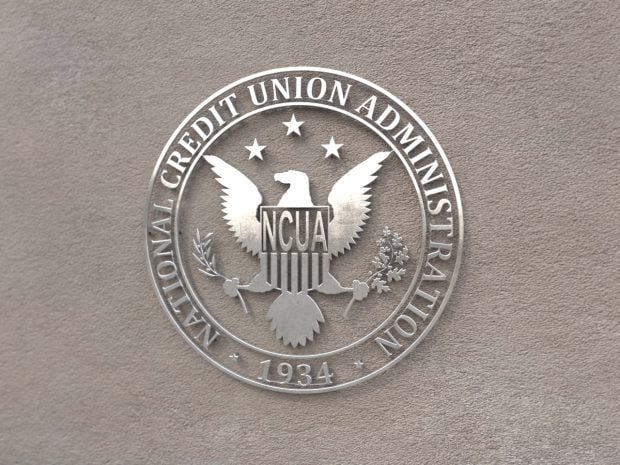ALEXANDRIA, Va. — The NCUSIF has $7.8 billion in assets and a strong equity ratio, but the increase in the number of credit unions experiencing difficulties is placing some strains on the fund, NCUA Chief Financial Officer Mary Ann Woodson told the board last Thursday.
The agency has $128 million in its reserve accounts–of which $103 million is unallocated reserves–to pay out claims in the case of credit union failures.
The fund's equity ratio in September was 1.28%, an increase from June's level of 1.24%, which is within the 1.20%-1.50% required by law. The agency projects it will end the year with an equity ratio of 1.28%, compared to 1.29% at the end of last year.
Recommended For You
Woodson did not disclose how much the fund has paid out this year, and after questioning from NCUA Chairman Michael E. Fryzel, promised to have that data for this year and the past 10 years at the board's November meeting.
So far, 13 federally insured credit unions have been closed this year compared to 12 in all of 2007.
Woodson also said that at the end of September, there were 246 CAMEL 4 and 5 credit unions, compared with 211 at the end of 2007. Currently, 2.08% of all insured deposits are in the troubled credit unions; in 2007, that figure was 1.04%.
She added that the increase was a cause of concern for the agency, especially since some of the credit unions on that list are larger asset-sized credit unions.
NCUA Vice Chairman Rodney Hood asked what impact the rise in coverage level to $250,000 would have on the fund.
Woodson said the law passed by Congress, which raises the amounts insured through 2009, forbids the agency from taking the increase into account when determining the cost of insurance.
Federally insured credit unions are required to maintain a deposit equaling 1% of their insured shares in the NCUSIF. The board can impose an assessment if the equity ratio falls below 1.2%.
NAFCU Chief Economist Tun Wai explained that the cost of failures can be difficult to determine in the near term. "At the time of the failure, you don't know that the true cost of the liquidation is. It takes time to find out what all the costs will be in terms of what is paid out to members or what is going to the credit union that his absorbing another one," he said.
The board issued a proposed rule to require credit unions that accept deposits for federally insured and nonfederally insured credit unions to post a sign stating that not all credit unions for which deposits are being accepted are federally insured. The sign also directs members to their credit unions for additional information.
Currently, credit unions accepting deposits for other credit unions must post a sign listing all credit unions that are part of its shared branching arrangement and whether each credit union is federally insured.
NCUA Board Member Gigi Hyland said the change will reassure members while placing the burden on them to be knowledgeable about whether their credit union is federally insured.
There is a 30-day period for public comment on the rule.
The board also unanimously approved final rules granting credit unions additional incidental powers, including the ability to provide services to members of foreign credit unions, payroll services, and allowing credit unions to act as finders for financial products of other financial institutions.
Fryzel announced that the board was postponing consideration of final rules amending the credit union chartering process to clarify the procedures for determining whether an "underserved area" qualifies as a "local community."
He said the agency's staff wanted to take additional time to fine tune the language. Both CUNA and NAFCU sent in strongly worded letters to the agency expressing concern about the regulatory burden on credit unions of proposed changes.
© 2025 ALM Global, LLC, All Rights Reserved. Request academic re-use from www.copyright.com. All other uses, submit a request to [email protected]. For more information visit Asset & Logo Licensing.







